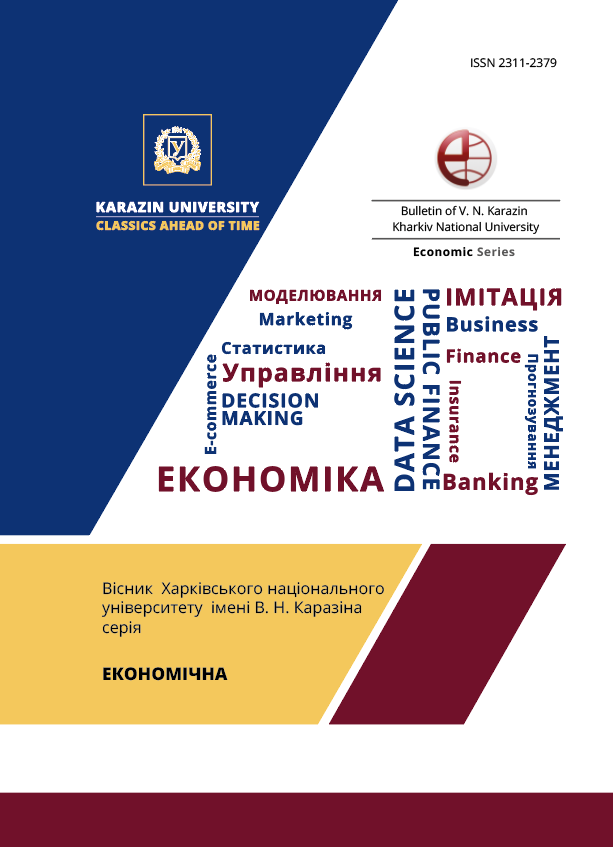Human resources management simulation in the IT-labor market
Abstract
The article developed a mathematical model of personnel management, taking into account the specifics of the activities of IT companies. The relevance of this study is due to the fact that the tasks of personnel management are subjective. This creates certain difficulties when choosing a mathematical apparatus for building a model for the effective distribution of specialists on projects in IT companies. The purpose of the research is to study modern methods and models of personnel management and develop a mathematical model for the selection of specialists with the necessary qualifications for an IT team. The article sets the following tasks: to analyze the theoretical and methodological foundations of economic and mathematical modeling of personnel management; to develop a personnel management model in the IT labor market. The authors describe the features of the activities of recruiting specialists in IT companies. The essence of the methods of personnel management in the IT labor market is analyzed. The specificity of the work of HR-managers (human resource managers) in outsourcing and outstaffing IT companies is considered. The use of a systematic approach to personnel management is proposed, in which an IT enterprise is considered as a subsystem of an economic system of the "fragment-aspect" type. The economic and mathematical model for recruiting specialists in an IT team, developed in the article, includes two components: "Model for the formation of the qualitative composition of IT personnel" and "Model for the formation of the quantitative composition of IT personnel". Forming an effective IT team requires a certain number of specialists with professional skills and universal competencies. The constraint conditions of the model describe the qualitative characteristics of applicants, such as profession, qualifications, hard skills and soft skills of candidates, and quantitative requirements. The model is built on the basis of heuristic methods for managing socio-economic systems and allows you to form a step-by-step list of applicants for vacancies in an IT team, taking into account the professional and personal qualities of specialists and the stated requirements for them from employers. The objective function is to minimize the total time spent by HR managers to form an effective IT team, taking into account the needs of customers. The result of the model's work is the formation of a list of candidates that should be recommended for concluding an agreement with customers.
Downloads
References
Krivoruchko, O. M., Vodolazhska, T. O. (2016). Management of the personnel of the enterprise: navch. Posibnik. Kharkiv: KHNADU. (in Ukrainian)
Bertchel, O. (2003). Personal-Management. Stutgart.
Priymak, V. І. (2003). Regional Markets of Ukraine's Pratsi: Transformation and Mechanisms of Regulation. Lviv: Vidavnichy Center of Lviv National University imeni Ivana Franka. (in Ukrainian)
Sadova, U., Semiv, L. (2000). Regional markets of practice: analysis and forecast. Lviv: ІРД NAS of Ukraine. (in Ukrainian).
Van Wissen, L., Popkov, A. Yu., Popkov, E. Yu., Popkov, Yu. S. (2004). Labor market model with entropy operator (competition of cohorts). Economics and Mathematical Methods, 40(2), 99-112. (in Russian)
Sovetov, B. Ya., Yakovlev, S. A. (2001). Modeling of systems: Textbook for universities 3rd type., rev. and add. Moscow: Higher. shk. (in Russian)
Vitlinsky, V. V., Tereshchenko T.O., Savina S.S. (2016). Economic-mathematical methods and models: optimization. Kyiv: KNEU. (in Ukrainian)
Ivchenko, I. Yu. (2007). Mathematical Programming. Kyiv: TSUL. (in Ukrainian)
Nakonechny, S. I., Savina, S. S. (2003). Mathematical program. Kyiv: KNEU. (in Ukrainian)
Sokolovska, Z. M., Andrynko, V. M., Ivchenko, І. Yu., Klepikova, O. A., Yatsenko, N. V. (2016). Mathematical computer modeling of economic processes. Odessa: Astroprint. (in Ukrainian)
Altukhov, A. E. (2003). Methods of building the demand function for labor resources. Economic Cybernetics, 5-6 (23-24), 83-90. (in Russian)
Sharapov, O. D., Derbentsev, V. D., Semionov, D. E. (2004). Economic cybernetics. Kyiv: KNEU. (in Ukrainian).
Zyryanov, V., Keridi, P., Guseynov, R. (2009). Traffic modeling of network level system for large event. 16th ITS World Congress. Stockholm.
Bowersox, D. J., Kloss, D. J. (2001). Logistics: an integrated supply chain. Moscow: Olimp-Business. (in Russian)
Fomenko, A. V. (2005). The effectiveness of the application of the logistic approach in the system of labor resources management. Problems of modern economics, 1(13). (in Russian)

